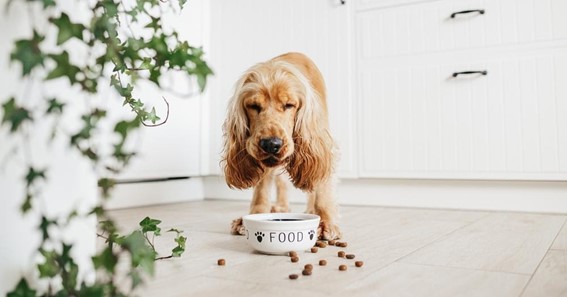Looking to help your dog live their best life? What dog owner isn’t! While focusing on their health and wellness might not be as fun as buying them mountains of new toys, it’s crucial for helping your dog to live the longest and happiest life possible. If you’re wondering where to get started, we have rounded up seven ideas to help you improve your dog’s wellness routine, starting today:
Understand your dog’s unique needs.
Each dog’s needs vary depending on their breed, their age, their health conditions, and their individual personalities. For instance, a high energy breed such as a German Shepherd usually needs a lot of exercise, but if your dog is older, they might not be as active as they once were. Talk with your vet about your dog’s needs when it comes to food, exercise, and mental stimulation. Your vet will be able to provide personalized recommendations based on your dog. You should also periodically evaluate your dog’s routine to make sure that it’s changing along with their needs as they age.
Know what’s in their food.
You give your dog food twice a day, but have you actually looked at the label to see what’s in it? Not all dog foods are created equal, and each contains different ingredients and nutrients which may or may not work for your dog. If their food is high in sugar or unhealthy fats, it might be time to switch to something else. Ask your vet for recommendations. Supplements such as collagen chews for dogs can also add additional nutrients if they’re not getting enough through their food or you’d like to give them an extra boost. You should also examine their treats to make sure that they’re not full of bad ingredients either (and remember that treats should only make up about five percent of your dog’s overall diet!).
Click here – Parallelogram and Area of Parallelogram
Stay on top of oral health.
Ideally, you should brush your dog’s teeth every day, but in practice, this is hard to achieve with a wiggly dog. Thankfully, there are some great alternatives, such as dental dog chews and water additives, that can be given to them daily. In addition to that, try to aim to brush their teeth once or twice a week. If it’s hard for you to do at home, teeth brushing is usually offered as an add-on at grooming service providers and veterinary clinics. Staying on top of your dog’s dental health will help prevent more serious (and expensive) problems down the line, not to mention make their breath smell much better. You can check out FurGenius to find out the best oral products for your dog.
Groom them regularly.
Another thing you should stay on top of is regular grooming. Bathing your dog once every four weeks is a good rule of thumb, but you may need to do it more or less depending on your dog’s unique needs. (And, of course, you should always bathe them immediately if they get dirty.) Brushing their coat a couple of times a week will keep their coat looking healthy and give you a chance to check them for skin and fur issues. If their coat tends to grow long, then you can give them the occasional trim. However, make sure that you don’t shave it all the way down, as fur is important for protection and temperature regulation. You should also trim your dog’s nails regularly, but don’t cut to the quick, as this is painful and can make them bleed.
Exercise them daily.
Dogs need to be exercised daily to tire them out and manage their weight. The length, intensity and frequency of exercise they need will depend a lot on their breed and age. High energy or young dogs will likely need several long walks or play sessions every single day, while older and smaller dogs may be tuckered out by one short walk per day. It’s also important to work their minds as well as their bodies, especially if they’re a notably smart breed. Puzzle toys, training sessions, and obedience classes will all make your dog pay attention and learn new skills, mentally stimulating them and making them happier and healthier.
Get regular wellness exams.
Just like with your own health, getting regular wellness examinations for your dog will help prevent health problems further down the line. Your dog should get at least one veterinary exam a year, which will include both medical and dental exams, as well as annual vaccinations. When your dog turns seven and officially becomes a “senior” dog, then they should get these examinations twice a year to catch developing problems early. Your vet will also talk to you about your options for protecting your dog against parasites such as ticks, fleas, and heartworms. Make sure to give them a natural dog treat after the appointment to reward them for being so good at the vet!
Spend quality time together.
You spend quality time together with the people in your lives to strengthen your relationship with them, so why wouldn’t you do the same with your fur baby? Spend at least a little time together one-on-one every day, and try to do special activities, such as visiting their favorite dog park, at least a couple of times a month. The one exception would be if your dog has separation anxiety, in case you actually need to work on spending some time apart. Talk to your vet about distinguishing between a bored, high-energy dog and one that actually has separation anxiety because sometimes people confuse the two.
Follow these tips to improve your dog’s wellness routine in the coming weeks and months. If you stick with it, you will see positive changes happen in your dog’s life — and yours, too!
Click here – What are Prosocial Behaviors?
To Know Some Great Stuff Do Visit CaresGuru
To Know Some Great Stuff Do Visit CrazzyCricket
To Know Some Great Stuff Do Visit CricFor
